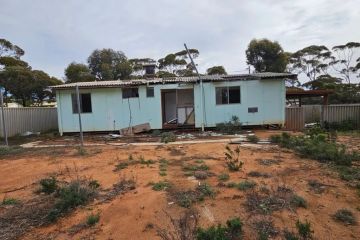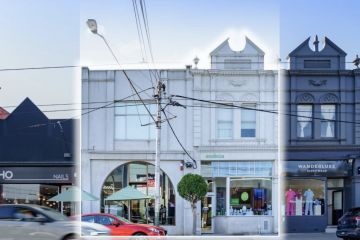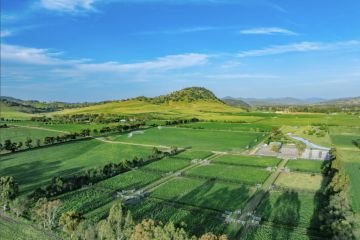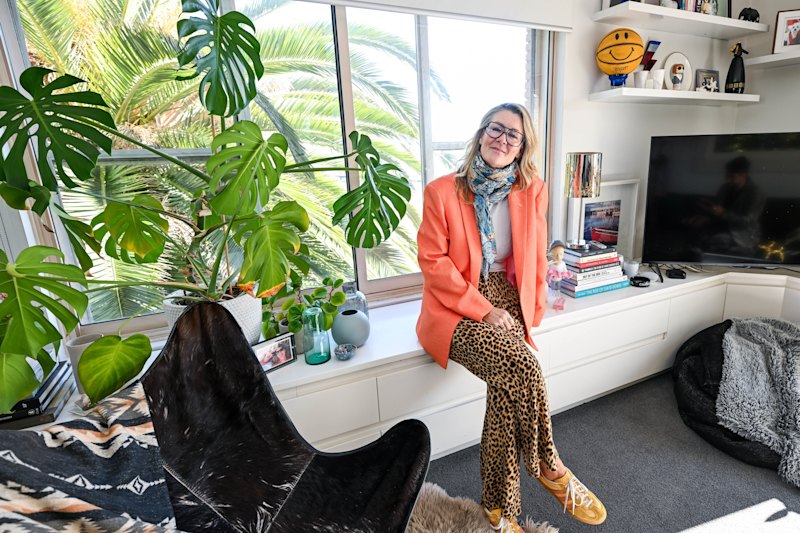How to build a self-sustaining house in the middle of a country bull paddock
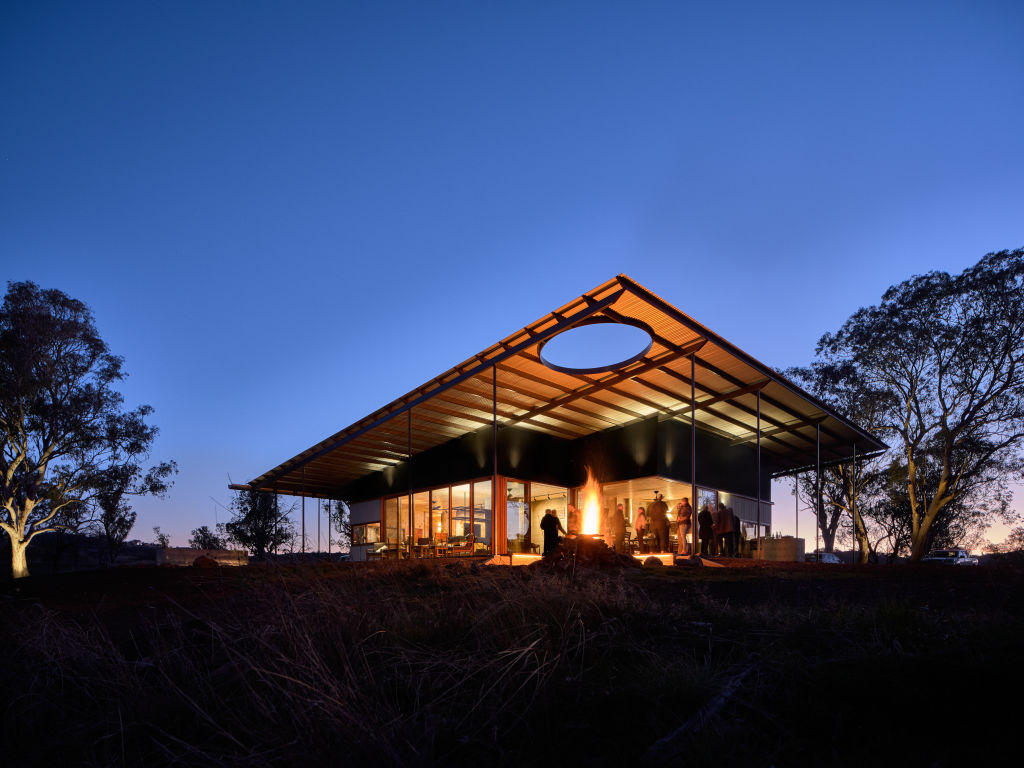
For a new house build to be set in a bull paddock in country NSW and so remote from any services it needed to be completely self-sufficient, architect Alex Symes had a model of the structure he was proposing.
On his first visit to the client’s Tamworth-vicinity property, he borrowed an Akubra hat and placed it in the dust.
He put it upside down because it illustrated the idea that if and when it did rain, a great big roof would collect an enormous amount of water and would also shade the interiors from the summer sun in a climate demonstrably getting drier and hotter.
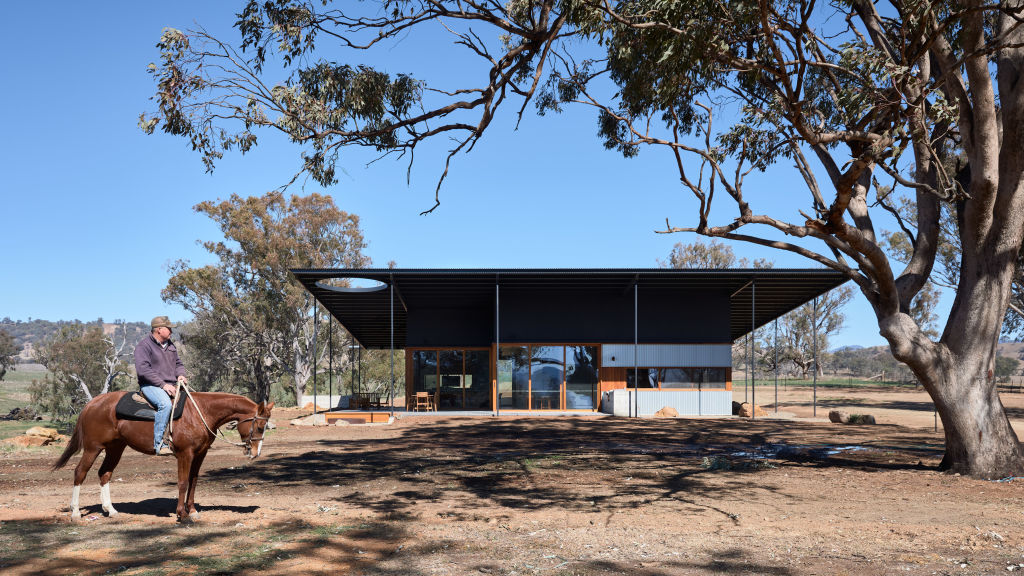
One of the most passionately evangelistic environmental designers working in Sydney today, Alexander Symes convinced the client couple that a roof 2.5 times the size of the three-bedroom house beneath would not be a case of over scaling.
“It was about future-proofing the property in what is an increasingly unpredictable future”, he says.
Today, that slightly-pitched and massive skillion harvests water for a system that channels rain via wide spoutings to the lowest point where an elongated spout creates a waterfall.
The cascade arcs out to direct downpours toward a rock-surrounded concrete tank that commences a reservoir system with a 107,000-litre capacity. If it fills, the overflow moves into the watershed of intermittent creeks around a house that looks out to trees, gullies and distant gentle hills.
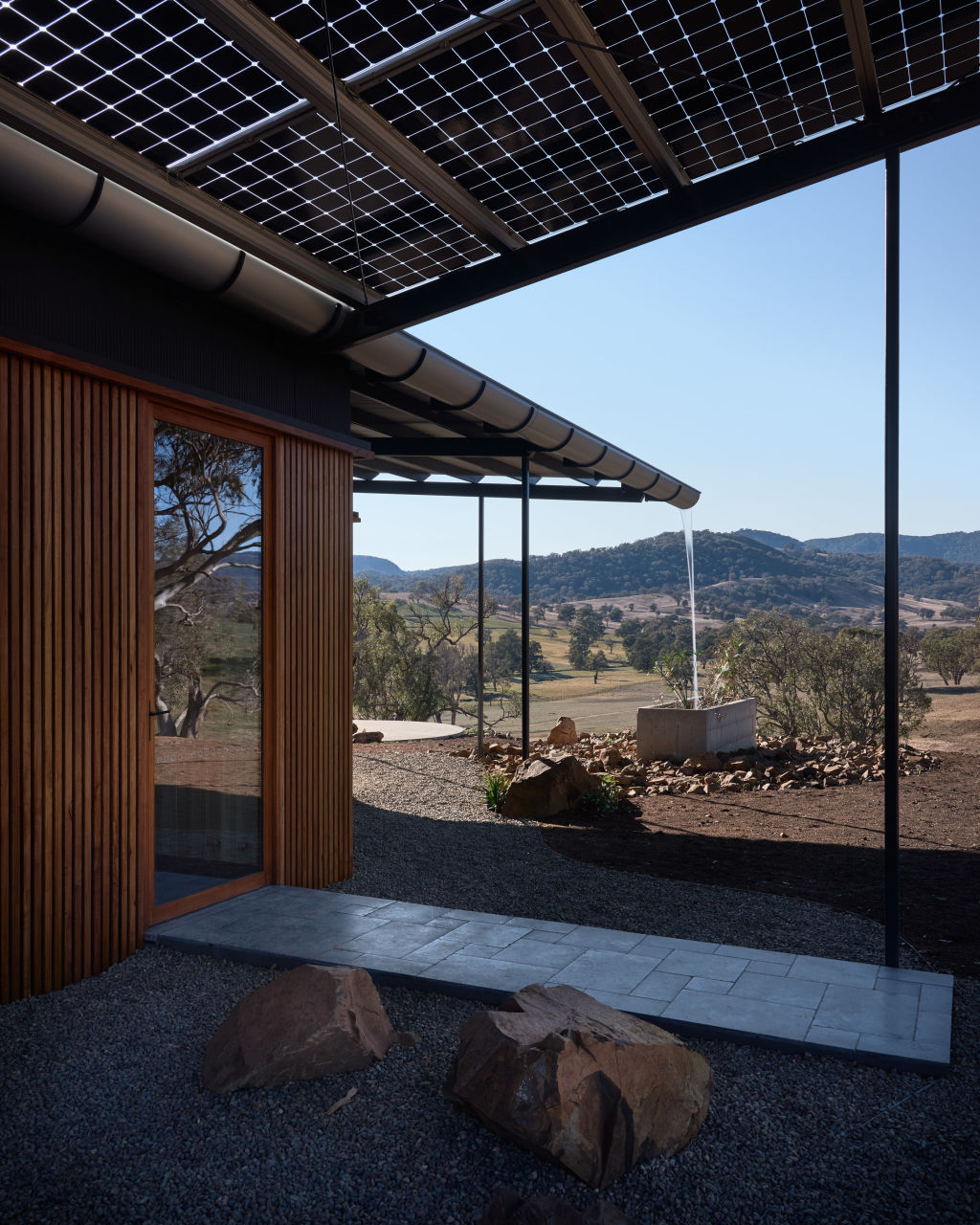
Both “uplifting” and practical, Symes is pleased that “the really important waterfall” is one of the “starter points” the house embodies to stimulate conversations around one of his pet ideas that sustainable design can not only have its own aesthetic but be educative.
Symes can give the rationale, data, and all the statistics down to the last kilowatt on how this off-grid building can function as a self-sustaining machine for living yet also be comfortable. It is also rustically refined, decked out in combinations of timbers, bluestone tiling and form-poured internal concrete walls where the imprints of the reusable formwork have become an intriguing craft mark.
Another example of “sustainable initiatives that make the project meaningful for me”, he points out, is that the roof of the carport is made of photovoltaic panels tailored to deliver precisely the amount of energy needed to power the house’s electricity needs.
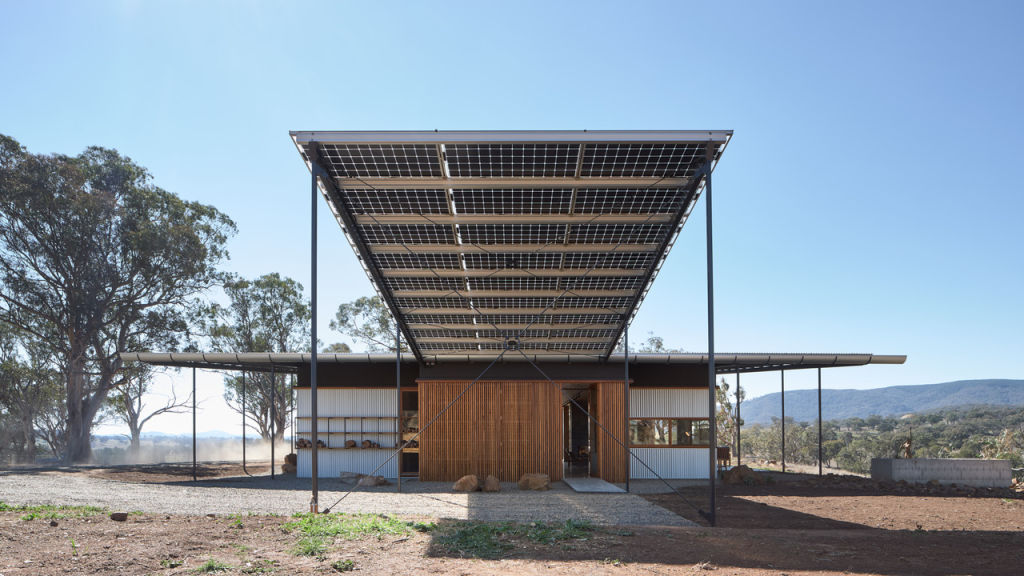
That the high, 80 square metre canopy would show the underside of the panels took a bit of convincing for contractors and clients. Still, it is intriguing as a semi-translucent feature and, of course, as another site for water capture.
“Because they’re bifacial”, Symes explains, “they generate electricity not only from the top but also from the bounced light that hits the underside”.
The architects say the building, with such easy, breezy interiors behind the double-glazed windows, was the work of four people; the builder Blue Eco Homes, the client couple – especially the wife “who wanted a balance of pragmatic function and creative design” – and the architect who saw scope to do a “best practice sustainable home that also hints at the Australian rustic vernacular.
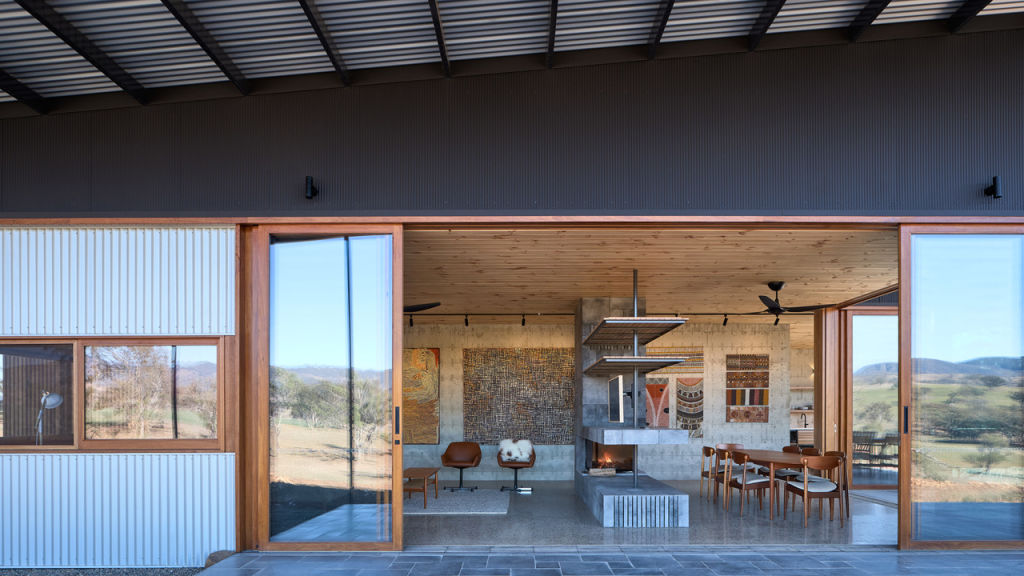
“In responding to this magnificent property, it was the four of us playing off each other like we were playing music together”.
But while there is so much to discover within and without; behind the secret doors of the utility room and up in the deep under-roof cavity where so many services are operating unseen, that massive roof is the thing.
Apart from the circular cut out in the north-east corner “that allows direct winter sun into the kitchen living area and also relates to the fire-pit below”, the pitch and scale is calibrated to shield the interiors from summer sun but allow winter sun to creep inside across the floors and hit the concrete walls so warmth can be stored in all that thermal mass.
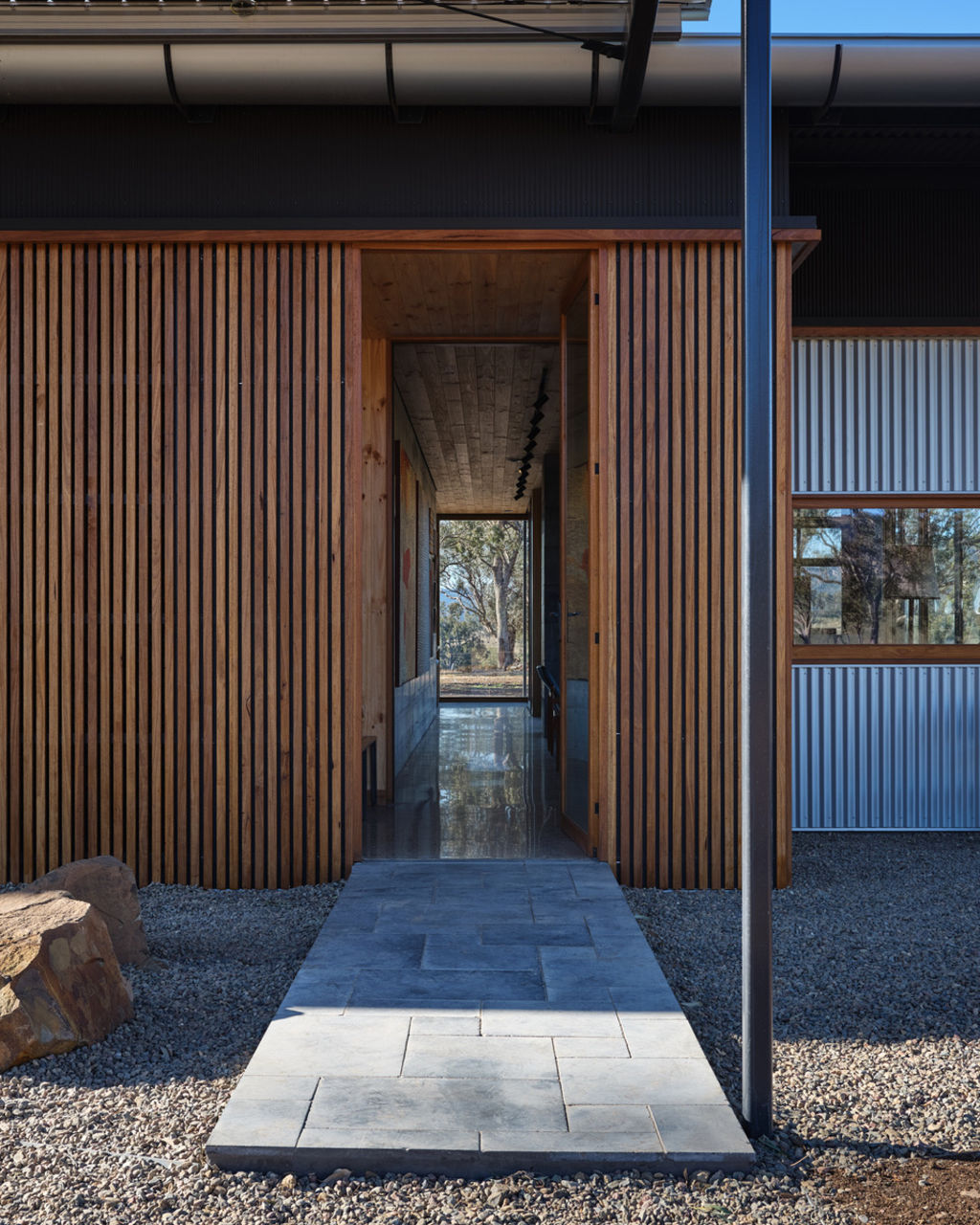
If the thermometer does plummet there is underfloor hydronic heating, but the capture of sunlight by the building can mostly maintain an interior winter ambience of between 21-24 degrees.
Alex Symes calls this project “Upside Down Akubra House” and rather humbly believes “what makes it unique is how the technology has become the aesthetic”.
We thought you might like
States
Capital Cities
Capital Cities - Rentals
Popular Areas
Allhomes
More
